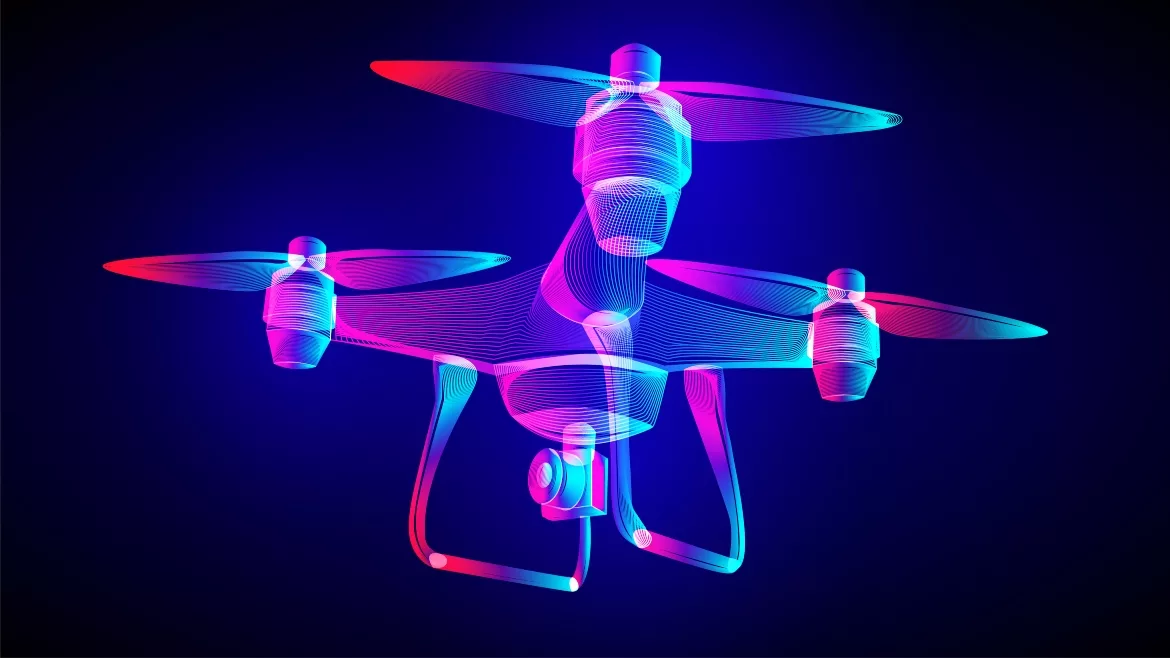More drones please: Why police departments need to see everything

Image by printstocker via Freepik
Before the Columbine, Colorado tragedy, the protocol for a lone police officer responding to an incident involving a suspected use of firearms or other weaponry within a building was to wait to engage any suspect(s) until backup arrived. However, the mass shooting in Columbine changed the protocol to demand immediate action. Today, when officers are the first to the scene, they are expected to engage with the suspect(s) immediately, regardless of the risk. This protocol (known as Advanced Law Enforcement Rapid Response Training or ALERRT) has prevented civilian deaths and stopped many active shooter incidents from becoming worse than they did.
There are, however, consequences of ALERRT — namely, the death and injury rates of responding police officers have increased. The problem is that most officers only get ALERRT training at the academy and not much once they are on the force (exceptions include special forces such as SWAT teams). Furthermore, in most incidents, suspect(s) have the tactical advantage given that the officer is entering a strange building. According to a study from the Police Executive Research Forum, one-third of these officers were shot when a solo officer entered an active shooter incident. The reality is that officers only depend on body armor (a vest) and wireless communications when instead, a simple yet high-tech approach could save lives and resources. These days, what is needed is a combination of drones and the ability for all police officers to see what the drones are seeing.
More Drones Needed
Although drones have been available to police departments for some time, as of 2020, 1,712 police departments across the country were actively using them. That may seem like a reasonable adoption rate until you realize that there are 17,985 police agencies in the United States, meaning that only 9.5% of departments have been utilizing widely available technologies that can save lives. With the barrier for entry being relatively low to deploy them, there is little reason for police forces not to deploy them in active shooter situations to help get a lay of the land. Yet there are multiple reasons for the reluctance, including privacy laws, FAA regulations, and battery life issues. Yet the main roadblock has been that the only officer who sees what the drone sees in most departments is the drone operator.
I am the Eye in the Sky…and on the Ground
When most police departments deploy drones at incidents, there is usually only one drone operator at the scene flying the drones and viewing the video feed at a mobile video console. This is great, except the operator has to describe the situation to responding officers verbally. This combination of high and low technology leads to inefficiencies in cases where every second — and every detail — counts.
Imagine a situation where a first responding officer arrives at the scene with a drone operator who quickly sets up a remote console and deploys the necessary drones. The difference would be that each officer deployed on-scene can view the video feeds in real-time via smartphone.
Each responding officer (and the backup officers) can easily surveil the situation and create a strategy based on what they see. In earlier deployment situations, the very appearance of the drone was enough to diffuse the situation and motivate suspects to surrender. For most deployments, however, responding officers were able to save lives and resources by being privy to real-time video feeds.
Next Steps
Regardless of what equipment/technology vendors dream up next for police departments, it is clear that the current analog tools most departments use are not enough to protect against the risk that first responding officers face during active shooter events. Adopting drones and exploring video solutions that can help police teams at incidents see everything happening would dramatically cut down on unnecessary deaths and injuries of law enforcement officers and bystanders. This reduction reduces potential mental anguish and lawsuits, which benefits communities, police departments, tax rates, and the suspects and their families.
This article originally ran in Security, a twice-monthly security-focused eNewsletter for security end users, brought to you by Security Magazine. Subscribe here.
Looking for a reprint of this article?
From high-res PDFs to custom plaques, order your copy today!








